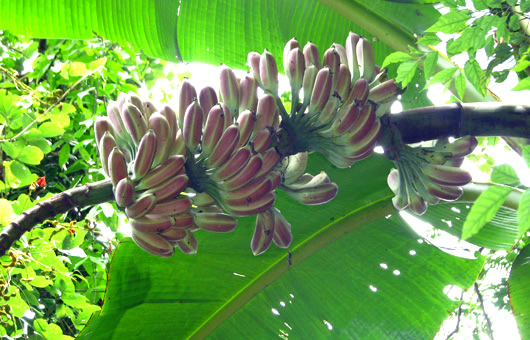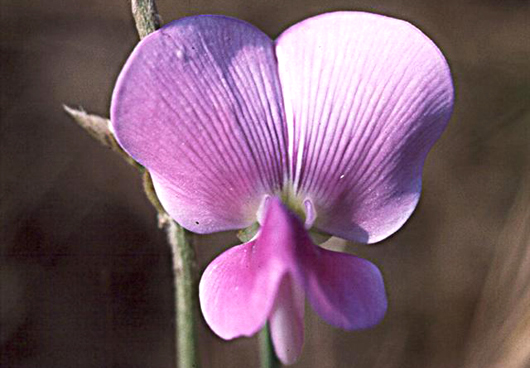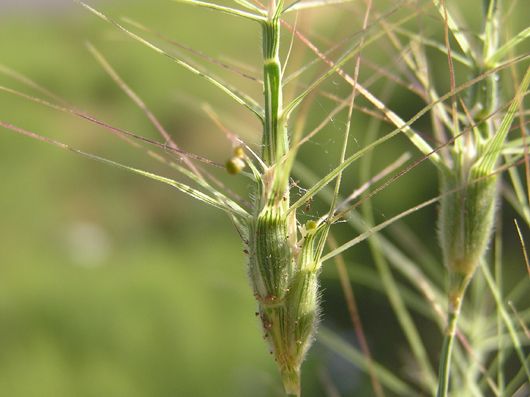Norway: Money pledged to save crop wild relatives
10.12.10
The Crop Diversity Trust (CDT), based in Rome, today announced a massive cash injection to understand and safeguard the world's major food crops and strengthen food security in times of uncertainty.
The partnership between CDT, the Royal Botanic Gardens, Kew, and the Consultative Group on International Agricutural Research (CGIAR) is probably the largest ever project undertaken on the wild relatives of our major food crops. These wild plants contain essential traits that could be bred into crops to make them more hardy and versatile in the face of dramatically different climates expected in the coming years. Norway is providing US$50 million towards this important contribution to food security.
“All our crops were originally developed from wild species - that’s how farming began,” explained Cary Fowler, Executive Director of the Global Crop Diversity Trust. “But they were adapted from the plants best suited to the climates of the past. Climate change means we need to go back to the wild to find those relatives of our crops that can thrive in the climates of the future. We need to glean from them the traits that will enable modern crops to adapt to new, harsher and more demanding situations. And we need to do it while those plants can still be found.”

Wild forest bananas © RBG Kew
Crop wild relatives make up only a few per cent of the world’s genebank holdings, yet their contribution to commercial agriculture alone is estimated at more than US$100 billion per year. One example dates back to the 1970s, when an outbreak of grassy stunt virus, which prevents the rice plant from flowering and producing grain, decimated rice harvests across Asia. Scientists from the International Rice Research Institute (IRRI) screened more than 10,000 samples of wild and locally-cultivated rice plants for resistance to the disease and found it in a wild relative, Oryza nivara, growing in India. The gene has been incorporated into most new varieties since the discovery.
“This project represents one of the most concrete steps taken to date to ensure that agriculture, and humanity, adapts to climate change. At a more fundamental level, the project also demonstrates the importance of biodiversity and genetic resources for human survival,” said Erik Solheim, Minister of the Environment and International Development of Norway, which is providing the initial budget of US$50 million to fund the work on 23 global food crops: alfalfa, bambara groundnut, banana, barley, bean, fava bean, chickpea, cowpea, finger millet, grass pea, lentil, oat, pea, pearl millet, pigeon pea, potato, rye, rice, sorghum, sunflower, sweet potato, vetch and wheat. The work is scheduled to take 10 years, from determining where to collect, through to having material ready for crop breeding programs.
Although plant breeders have incorporated many traits from the wild relatives of our crops over the years, the plants have never been comprehensively collected or conserved, according to the Global Crop Diversity Trust. As a result, valuable traits are largely unavailable to plant breeders and farmers and many are at risk of being lost forever due to climate change and rapid habitat loss. According to the UK’s Royal Botanic Gardens, Kew, a major partner in the project, one-fifth of the world’s plants are threatened with extinction.

Vigna platyloba, related to cowpea and bambara groundnut
© Bioversity International/S. Padulosi
It is widely understood that, irrespective of the outcomes at the United Nations’ climate change conference in Cancún, the coming decades will see ever more challenging conditions for agriculture. The forecasts for declining yields are particularly frightening for the developing world. For example, yields for maize in Southern Africa, a vital crop in a region which already suffers from chronic hunger, are predicted to fall by up to 30 per cent within just 20 years. The standard response until now has been that new, hardier varieties of our crops will be required.
“We are taking a step back and challenging the lazy assumption that new crop varieties will just materialize out of thin air,” said Solheim. “The aim of the project is to collect wild crop diversity and put it into the crop breeding pipeline before this treasure is lost from the wild forever. This is a two-fold race against time - the race to adapt agriculture to climate change, and the race to collect biodiversity before it is lost forever. We are extremely excited to support a project that will help insure our common future, and look forward to other donors adding their support so that more crops can be included.” Norway showed its deep commitment to conserving the world’s plant biodiversity in 2008, when it built the Svalbard Global Seed Vault, offering a secure Arctic home for millions of seed samples collected from around the world.

Wild wheat © Bioversity International
“Diversity equals resilience in the biological world, which is why this project is vital to the survival of agriculture,” said Paul Smith, Director of the Millennium Seed Bank at the Royal Botanic Gardens, Kew, and a key partner in the project announced today. Kew’s unparalleled experience in wild plant collecting and seed biology will be brought to bear not just on a conservation problem, but on the whole issue of food security, added Smith.
According to the partners, the scale of loss in the wild is not the only urgent factor. On average, a new crop variety takes 7-10 years to breed, so it is essential for the work to begin now, before the effects of climate change begin to wreak havoc on food production. “Improving food security means helping farmers today,” said Solheim, “but also taking steps to ensure they will be able to adapt to changes in the future. If we wait until the climate has changed, it will be too late. Delaying adaptation is short-sighted and the poor will pay the heaviest price.”
The program will target critical traits in the wild relatives of crops that are essential, especially in the developing world, where climate change could cause production declines of between 10 and 30 per cent or more. Wild relatives of crop plants tend to be much more diverse than their domesticated cousins. They grow in a wider variety of climates and conditions.
The Global Crop Diversity Trust will draw in climate change experts, biodiversity conservationists and agricultural scientists. Scientists will work with national governments and local partners on the ground, and the species to be collected all fall under the auspices of the International Treaty on Plant Genetic Resources for Food and Agriculture. All materials will be collected and be publicly available under the terms of that Treaty.
Collecting is only the first step. The aim is not simply to collect and conserve, but to use and thus benefit from this diversity. However, these wild plants cannot be used straight away in a crop breeding programme - as wild plants contain many characteristics that are undesirable for crops, along with the desirable ones. The 10-year scope of the project will therefore ensure that collected seed can be grown and crossed with existing breeding lines, a process known as “pre-breeding,” to see if the traits of interest can then be introduced effectively into domesticated plants. Once this is done, the diversity is available to all plant breeders, everywhere.
Preservation and Progress
Samples will be conserved in a number of sites around the world, including the Svalbard Global Seed Vault, and the genetic material and information will be shared electronically and openly. The project will also provide training to partners in the developing world in identifying and handling wild species and in plant-breeding techniques. “Variable temperatures, pests, diseases, droughts and floods are agricultural problems that have always been with us,” said Fowler, “but climate change will be like putting such traditional agricultural problems on steroids.” This initiative will create an unprecedented resource for developing “climate-ready” food crops.
For example, wild plants could address the issue of rice’s temperature sensitivity. At a critical stage in rice flowering, a one degree Celsius change in temperature can cut yields by 10 per cent. Most high-yield rice varieties flower during the heat of the day, but some wild rice relatives flower at night. “With climate change, temperatures rising by a few degrees could cut yields by 30 to 40 per cent,” said Fowler. “But if we could just incorporate the characteristic of night-flowering from wild rice into farmed rice, we could save millions of tons of rice, and thousands of lives. That would pay for the project many times over.”
“This is a game changer,” said Fowler. “This project will provide us with enormous amounts of diversity, and will provide plant breeders and farmers around the world with access to that diversity. We’re going to find resistance to diseases and pests that farmers have never had before. If - and it remains an ‘if’ - we are to adapt agriculture to climate change, we need to stack the odds heavily in the farmers’ favor. This does just that.”
Words from RBG, Kew press release with editorial changes
Related links:
The Global Crop Diversity Trust
The Royal Botanic Gardens, Kew